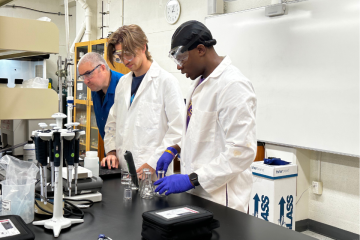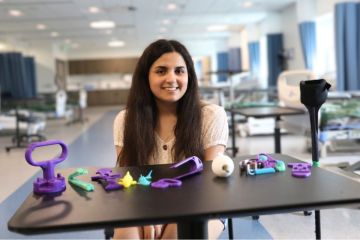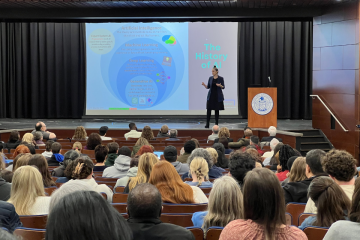Dual Discovery: Engineering Research Unlocks Potential for Alzheimer’s Treatment and One Student’s Purpose
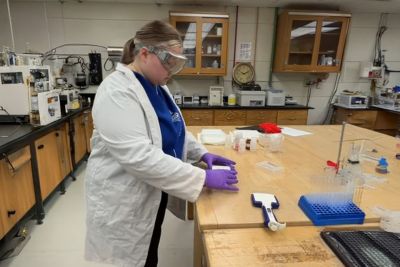
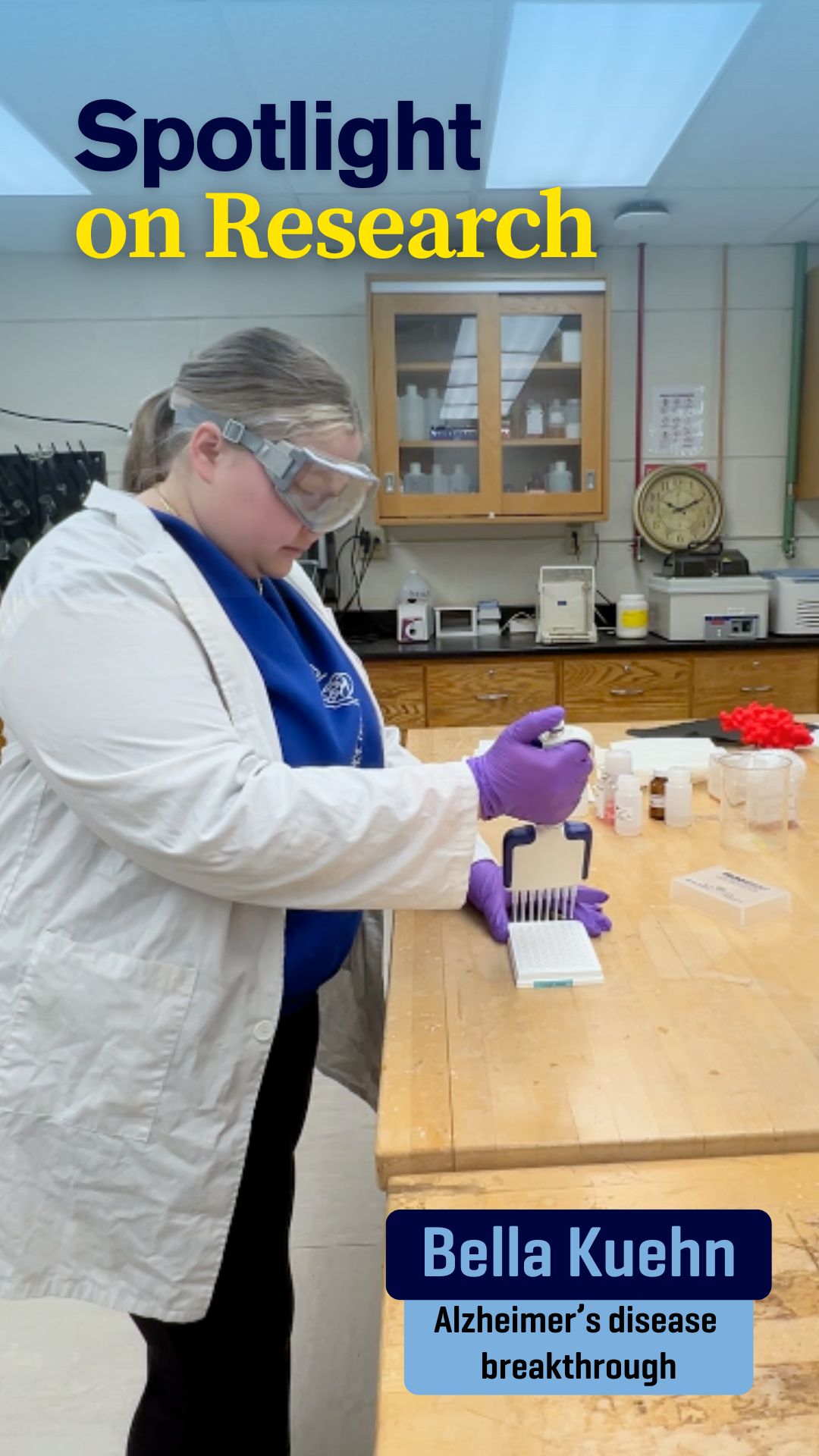 A faculty-student research team in the School of Engineering has published promising research that stands to alter the trajectory of Alzheimer’s disease treatment.
A faculty-student research team in the School of Engineering has published promising research that stands to alter the trajectory of Alzheimer’s disease treatment.
Published in the journal Molecules earlier this year, the findings discovered a pathway for potential future therapies for the nearly 7 million Americans who live with Alzheimer’s disease, or AD.
“Our findings mark a significant step forward in Alzheimer’s research,” said Sachin Patil, professor of chemical engineering, who led the research.
AD is a progressive neurodegenerative disease marked by steady cognitive decline that includes memory loss, difficulty with language, and, at times, an inability to reason. The disease is largely influenced by a genetic risk factor known as apolipoprotein E4, or ApoE4, a protein whose structural instability contributes to neurodegeneration. The research targets ApoE4 instability by using small molecules to correct the protein’s structure and mitigate its harmful effects.
“We investigated naturally-occurring small molecules to determine which were capable of controlling the ApoE4 structure and function,” said Patil. “Using our integrated computational and experimental screening protocol, we investigated a focused database to identify Isobavachin as a potential corrector and stabilizer of the ApoE4 structure.”
The research was conducted in Patil’s NanoBio Lab, a chemical engineering lab that has earned a reputation for investigating treatments and cures for some of the world’s leading diseases. This latest discovery rivals studies coming out of the nation’s top institutions, a reflection of the caliber of research produced in Widener labs.
“Our students are not only gaining hands-on experiences, but they are also contributing to PhD-level research often found at R-1 research institutions during their undergraduate and graduate careers,” said Patil.
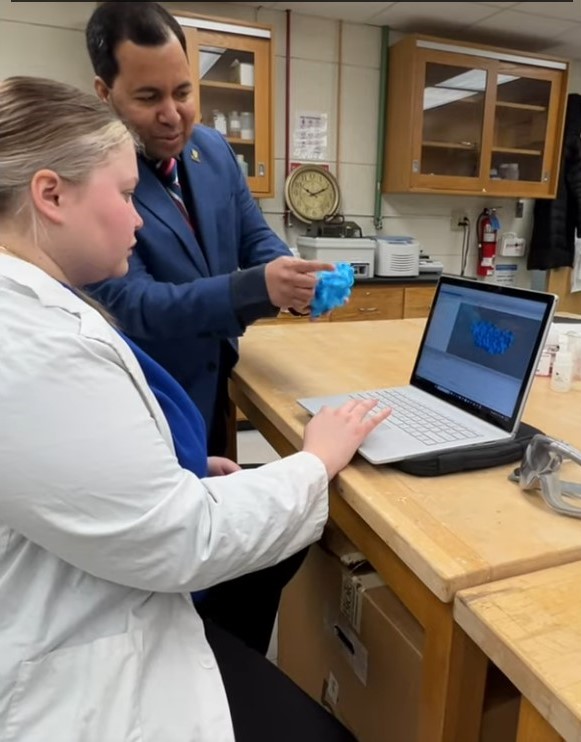
One of those students was Bella Kuehn ’24 ‘25, a dual chemistry and chemical engineering 4+1 student who joined the lab in 2023 during her senior year. What started as a hands-on research opportunity quickly transformed into a passionate pursuit for Kuehn, who knows the devastating effects that dementia can have on an individual and their family.
“This discovery could potentially help any neurodegenerative disease,” said Kuehn. “No matter what type of dementia it is, it's hard to deal with. And it's hard to lose a loved one like that and see a loved one in that state, so this work hits close to home.”
The two-time Widener graduate remembers feeling helpless when her grandfather battled an undiagnosed neurological disease. After losing her grandfather, her uncle was later diagnosed with Lou Gehrig's disease, also known as ALS, a neurodegenerative condition that can also can cause cognitive changes like dementia.
Her personal experience, coupled with curiosity in chemical engineering, inspired Kuehn to pivot from a career in cosmetics to disease research where she hopes to help families facing the same devastation.
“I feel like I’ve found my purpose,” Kuehn said. “Even if we can’t find a complete cure yet, taking steps that give families more time, more recognition, more memories—that’s powerful.”
According to Patil, the results lay a strong foundation for further preclinical investigations into Isobavachin and similar flavonoids as potential disease-modifying agents.
“Alzheimer's disease is so complex. There're so many different things going on that it's great to be successful with one pathway, and we were very excited about that,” said Kuehn. “But there's always the next step because it's so complex.”
In addition to the peer-reviewed publication, Kuehn took the investigation one step further as part of her master’s thesis. Building on the team’s success of identifying compounds that stabilize ApoE4, Kuehn’s thesis investigated which small molecules can activate TRK receptors—proteins critical for neuron survival and synaptic plasticity.
“The second target was activating TRK receptors,” Kuehn explained. “We discovered small molecules that not only correct the structure of ApoE4, but they also activate these TRK receptors, so we're tackling it at two different ends.”
This dual-action approach has the potential to significantly slow, or even prevent, the progression of Alzheimer’s.
This experience gave Kuehn the tools and mentorship to conduct research that not only shapes the field, but impacts lives.
“Since working on the challenging disease like Alzheimer’s under Dr. Patil’s guidance, it gave me a purpose,” Kuehn added. “This is something that changes people’s lives.”

